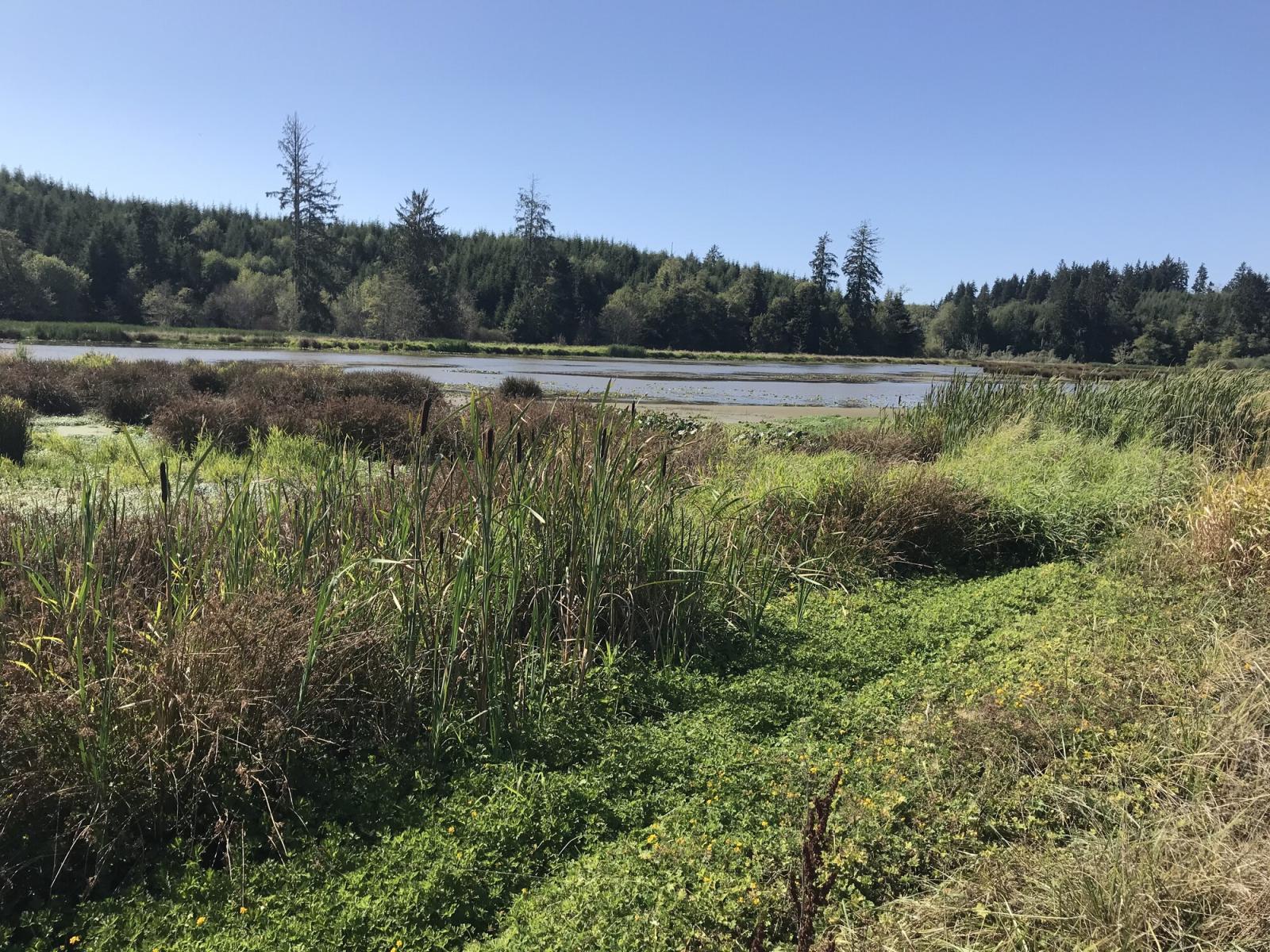
The North Willapa Bay Unit is made of multiple properties that are primarily managed for the conservation of critical estuarine and coastal wetland habitats. Protecting and restoring these habitats benefit salmon, waterfowl, shorebirds, marine invertebrates, and other fish and wildlife species. The Smith Creek and North River properties include estuarine and riparian habitats. At the Potter Slough property, dike removal restored hundreds of acres of tidelands. Recreation opportunities on the unit include hunting, fishing, boating, and wildlife viewing.
The Smith Creek and North River properties are 8 and 10 miles, respectively, west of Raymond. The Potter Slough property is located 2 miles west of South Bend. All unit properties are located in Pacific County.
Unit properties are either on rivers or creeks that drain into Willapa Bay or on the bay itself. The bay is the most ecologically intact large estuarine bay in the continental United States.
This unit is part of the Johns River Wildlife Area.
Game Management Units: 673, 658
Getting there
Maps and directions to WDFW-managed access points for this unit. Opens Google Maps in a new tab.
Recreation and public access
A Discover Pass is required on WDFW lands -- including water access areas, wildlife areas, and campgrounds -- unless you already have a Vehicle Access Pass issued with the purchase of an eligible hunting or fishing license. Recreate responsibly on public lands: please know the Public Conduct Rules.
Public facility information:
- Parking areas
- Restrooms (ADA)
- Informational kiosks
- Boat launch
Recreation and access advisories
- A Discover Pass is required on WDFW lands -- including water-access sites, wildlife areas, and campgrounds -- unless you already have a Vehicle Access Pass issued with the purchase of an eligible hunting or fishing license
- Recreate responsibly on public lands and know the Public Conduct Rules
- No overnight parking or camping
Hunting
The North Willapa Bay Unit provides opportunities to hunt for black bear, cougar, deer, elk, small game, forest grouse, duck and geese (including brant).
Lead shot restriction. Lead shot can kill wildlife that ingests it, and it only takes a few lead pellets to be toxic to wildlife.
Fishing
This unit offers fishing and boating opportunities. The Smith Creek property includes the Smith Creek water access site which has a concrete boat launch.
Wildlife viewing
A variety of wildlife viewing opportunities occur on this unit, including the potential to see to see black bear, cougar, deer, elk, small game, forest grouse, duck, geese (including brant) and shorebirds.
In spring, migratory shorebirds along the Pacific Flyway use coastal wetlands and estuarine habitat as stopover places to feed and rest on their way to Arctic and sub-Arctic breeding grounds.
Search for potential birding opportunities on or near a wildlife area unit by using eBird Northwest, a citizen science database portal that provides freely-shared bird lists at 'hotspots' and interactive maps plus other birding information updated daily.
Conservation
The North Willapa Bay Unit properties are primarily managed for the conservation of critical estuarine and coastal wetland habitats.
Special habitats and species
Dike removal at Willapa Wetlands (also known as Potter Slough) re-introduced approximately 300 acres to tidal fluctuation for the purpose of restoring critically limited estuarine habitat and wetland sloughs. Freshwater wetlands were also constructed on the west side of the US Highway 101. These habitats provide significant benefits for salmon, waterfowl, shorebirds, and marine invertebrates. Estuarine and wetland sloughs provide rearing and nursery habitats for juvenile salmonids making the stressful fresh to saltwater transition. Rejuvenated riparian habitat increases primary production and aquatic and terrestrial insect populations which juvenile salmonids depend upon.
Conservation goals
- Manage for waterfowl and species diversity
- Protect and restore estuary and freshwater wetlands
- Restore fish populations
Dike removal at Willapa Wetlands (also known as Potter Slough) re-introduced approximately 300 acres to tidal fluctuation for the purpose of restoring critically limited estuarine habitat and wetland sloughs. Freshwater wetlands were also constructed on the west side of the US Highway 101. These habitats provide significant benefits for salmon, waterfowl, shorebirds, and marine invertebrates. Estuarine and wetland sloughs provide rearing and nursery habitats for juvenile salmonids making the stressful fresh to saltwater transition. Rejuvenated riparian habitat increases primary production and aquatic and terrestrial insect populations which juvenile salmonids depend upon.
- Manage for waterfowl and species diversity
- Protect and restore estuary and freshwater wetlands
- Restore fish populations
Land stewardship
North Willapa Bay properties were originally acquired for the conservation of coastal wetlands and estuarine habitats primarily for the benefit of waterfowl, shorebirds, and salmon.
Acquisition history
The parcels making up this area were purchased between 1968 and 2025.
| Funder | Fund |
|---|---|
| Private Grantor | Mitigation Funds |
| Private Grantor | Private Donation |
| Private Grantor | Transfer of land |
| US Fish and Wildlife Service | National Coastal Wetlands Conservation Grant |
| US Fish and Wildlife Service | North American Wetlands Conservation Program |
| WA Dept of Fish and Wildlife | State Migratory Waterfowl Fund |
| WA Dept of Fish and Wildlife | WDFW Game Fund (now Wildlife Fund) |
| WA Recreation and Conservation Office | Salmon Recovery Fund |
| WA Recreation and Conservation Office | State Bond Account |
| WA Recreation and Conservation Office | Washington Wildlife and Recreation Program |
Management planning
2006 Olympic-Willapa Hills Wildlife Area Management Plan
Every eight to 10 years, the Washington Department of Fish and Wildlife (WDFW) revises management plans for each of its 33 wildlife areas to document current conditions, address new agency initiatives, and identify new management priorities and actions. In between those major revisions, WDFW updates plans every two years to outline short-term objectives and accomplishments. In 2014, WDFW began the process of updating existing plans, many of which were written in 2006. The new plans are being developed with significant public participation and input.